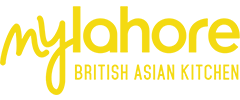With so many options for diners to choose from you need to be exceptional to stand out from the crowd. Selecting the right technology is pivotal in creating an exceptional service experience and ensuring that you sprint ahead of the competition.
From online booking to table side ordering and mobile payments – an integrated and optimised technology stack is key to creating a fast, efficient and convenient digital experience. It affords you a wealth of opportunities for upselling and future marketing.
Let’s explore five key components of the customers’ digital journey.
1) Online table bookings
The days of waiting on the phone to make a restaurant reservation are long dead with most people preferring the speed and convenience of sites such as OpenTable.
We recommend integrating the online bookings and your EPOS software. This gives you a wealth of data which you can use in two key ways:
1) The integration enables you to capture data such as guest spend and to see who your regular customers are – vital for creating a personalised experience and ensuring that your VIPs get special attention.
2) By mining historical booking data triangulated from both Open Table and the EPOS software you can create highly targeted email campaigns based on their past dining preferences. Further integrations between Open Table and email platforms such as Mailchimp will enable you to set up lucrative campaigns on auto-pilot.
2) Online takeaway and deliveries
The takeaway and delivery business has exploded recently. This is sure to continue as an additional and profitable revenue stream for many. Getting orders to diners quickly is key to getting great reviews on the delivery sites and keeping you in their minds when they order again.
Here’s how the EPOS software helps speed service and capitalise on revenue opportunities:
1) The opportunities are endless – expand your reach way beyond your restaurant walls and with integration of the EPOS software and sites such as Deliveroo you gain an essential marketing tool.
2) Customer details are stored in the EPOS software so your staff can easily find their details when they contact you again – repeat orders can be processed in seconds.
3) With shorter wait times – your staff can process more orders and delight more customers.
4) Optimised route planning ensures that customers get their food fast and fresh.
5) Digital signage lets your takeaway customers know exactly when their food is ready.
6) It provides a wealth of data for future targeted email campaigns.
3) Digital Signage
Wave goodbye to expensive and dog-eared menus. Digital signage is the modern and eye-catching alternative.
Introduce digital signage and you get a number of benefits:
1) It’s easy to change. Menu changes can be updated in seconds – even across multiple sites.
2) It’s cost-effective and eco-friendly. Eliminate the need for costly graphic designers, printing costs and distribution.
3) The marketing opportunities are endless. Attract passing trade with eye-catching offers – today’s durable digital signs can be placed outside in all weathers and are totally vandal proof too.
4) Upselling is easy – integrating the EPOS software with the signs gives you the added ability to display special and combo offers straight from the terminal.
5) You can be creative – for example show wine pairings or special sauces. More upsell opportunities!
6) Improved customer service – delivery drivers and diners can see at a glance when their orders are ready. The signs can even be used to direct drivers and customers to the correct pick up point – easing congestion in the restaurant.
7) You can easily display allergen and calorie details. What’s more, if a menu item changes recipe you can change the calorie count instantly.
8) Easy to create a consistent brand message. Whether you have two sites or a thousand sites, you can update all your digital signage at the touch of a button using the intuitive content management system.
4) Kitchen automation
Whether you provide seating or takeaway or both your reputation depends on the speed and accuracy of your kitchen. No one wants to wait for cold food or the wrong order. Kitchen automation reduces the margins for error and speeds up service significantly.
With an integrated kitchen automation and EPOS software solution you can:
1) Speed up service and reduce errors. Typically, our customers report a 15% increase in speed and a 40% reduction in errors.
2) Reduce wait times – using handheld ordering integrated with the EPOS software and kitchen displays orders can be sent through to the kitchen in a matter of seconds.
3) Optimise resources automatically – send orders through to under-utilised stations if another station is being slammed with orders.
4) Real-time reporting on speed of service – you can see where the bottle necks are and take immediate corrective action.
5) Manage guests’ expectations. Integrate the solution with digital signage so diners know exactly when their order will be ready.
5) Mobile payments
Today’s customers are impatient. They don’t want to wait for your staff to notice them and bring a bill – they want to dine and dash. Thanks to today’s mobile payment systems you can offer them a convenient pay at table solution which offers them the speed of payment they need and helps increase your table turns.
Key benefits:
1) Flexibility – integration between the EPOS software and the mobile payment solutions gives you all the features of a fixed EPOS terminal. Guests can even split bills, pay and leave.
2) Faster orders and collections – diners can order and pay quickly on their mobile and simply pick up their orders – all payment processing is taken care of automatically.
3) Order at table – guests can order and pay at the table. Thanks to the integration of EPOS, kitchen and mobile payments – orders are sent through to the kitchen immediately
4) Time savings – our customers are reporting an average time saving of 7 minutes per table
5) Increased customer retention – guests have the choice of branded app or native web page. You can present them with special offers and other upsell opportunities.
6) Increased revenue – by offering guests the opportunity to book through your own app you save on having to pay commissions to third-party delivery sites.
Conclusion
The world of hospitality is changing rapidly and digital technology is transforming the restaurant business.
Changes in dining habits, such as online ordering, have exploded as a result of the pandemic. However, once embedded in diners’ behaviour they will likely be permanent changes.
Successful operators need to embrace these changes and provide a multi-channel experience – at table, takeaway or delivery to reach as many guests in their journey.
When choosing an integrated technology stack you need to look at key areas such as automation, the online experience and customer retention.
By carefully selecting and implementing the right solutions you can create an operation which delivers a consistently exceptional guest experience and provides all the data you need for continued revenue generation.
















